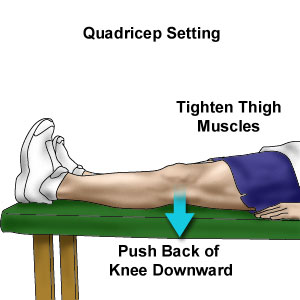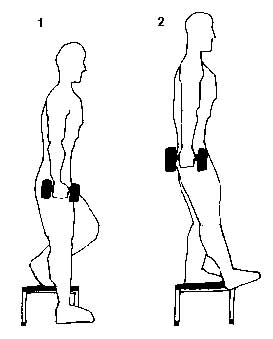Why should you care about knee stability? Because your knees are suppose to be stable. Unstable knees tend to become painful knees. I don't know about you, but I don't like knee pain.
Ono of the main reasons I love being a personal trainer is because I am fascinated by how the human body is designed. In order to get the best training results, I focus on how the body is suppose to function. Many people still train like body builders in the sense that they try to train individual muscles. I use to train this way. (Bicep curls for the front of the arms) Our brains are not designed to understand this concept. They are designed to understand/control movements. Vern Gambetta his website, gambetta.com/ taught me this concept. (Train movements, not muscles)
A few years ago I learned the concept of that certain joints should be more mobile while others should be more stable. As you move up the body from the ground, a mobile joint is followed by a stable joint. Example: Ankles should be more mobile, knees more stable and hips more mobile. We still want controlled mobility (stability) in the ankles and hips. Movement in a joint without stability leads to joint pain.
 |
| Ankle Flexion and Extension |
| Ankle Rotation |
| Hip Flexion and Extension |
| Hip Rotation |
If you don't have enough mobility in the ankles or the hips, your brain will allow the knees to become more mobile and less stable than they should be. This in turn can lead to knee pain. Our bodies do a great job of creating movement in a joint that needs stability if the mobility of the nearest joint is compromised. In the short term this is ok, but not a great idea in the long term.
In 1983 I suffered a knee injury that required surgery. After the surgery, my rehab consisted of quad sets and straight leg raises.
 |
| Quad Sets |
 |
| Straight leg raises |
If this injury had occurred twenty years later, my rehab would have been a lot different. In 1983 the focus was on the knee cap and quadriceps muscles. Now the focus is on the hip muscles as well as the quadriceps. Imagine that the knee cap is the train (controlled by the quads) and the femur is the train track. (controlled by the hip muscles) It doesn't due a whole lot of good to focus on the train, if the tracks aren't stable enough.
If you want your knees to remain as pain free as possible, work on their stability. My favorite knee stability exercises are Peterson Step Ups, Standing Terminal Knee Extensions, and Monster Walks.
 |
| Peterson Step Up |
 |
| Standing Terminal Knee Extensions |
 |
| Monster Walks with a band around the ankles for added resistance |
Why do I like these exercises? Because they develop controlled mobility in the ankles and hips while developing stability in the knees at the same time.
Combining knee stability exercises and strength training exercises (my favorites are Bulgarian Squats and One Legged Stiff Legged Deadlifts) a couple of times per week with foam rolling exercises keep my right knee happy which makes me happy.

No comments:
Post a Comment